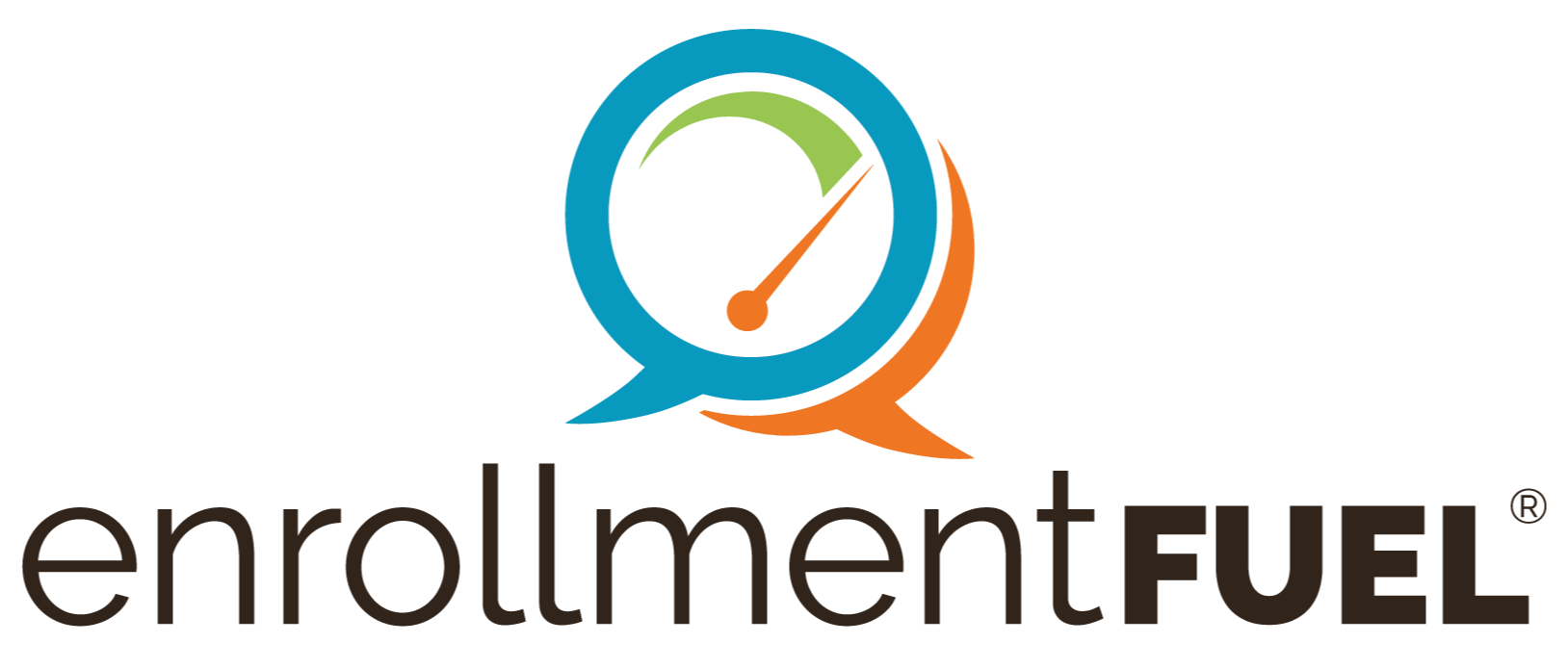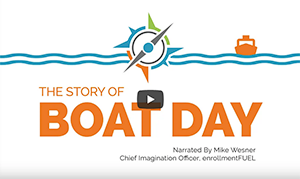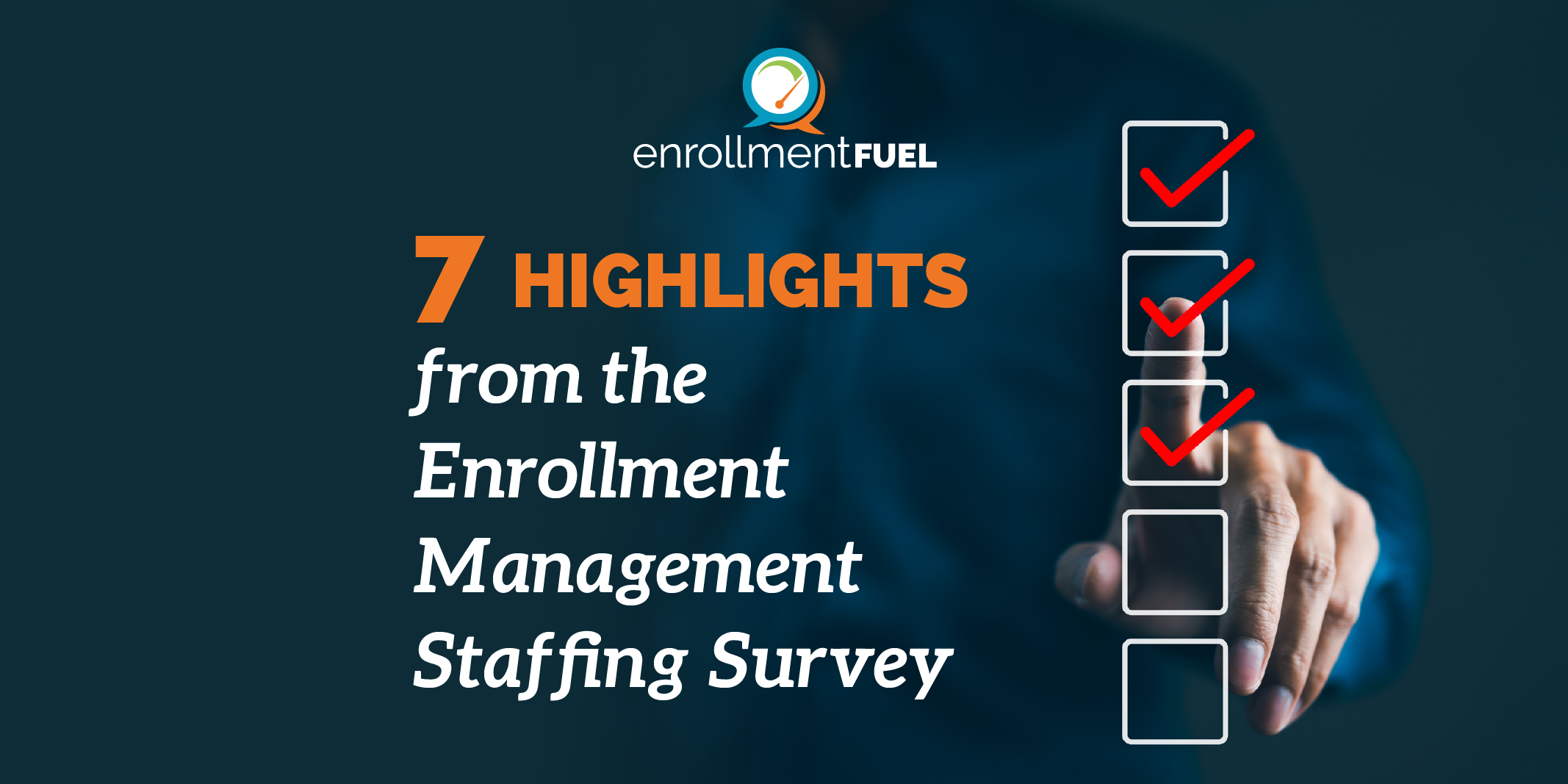7 min read
How and Why College Students Select an Institution
I recently went to dinner with a friend of mine. The dinner was fabulous, the company even better, but the decision-making process of where to go was painful.
We have all been there; I am certain of it. “Where would you like to eat?” “Oh, I don’t know; how about you?” “I don’t care; you tell me.” Sound familiar? Some decisions like where to eat are easy to solve, while others, like what to do in the case of landing an airplane in distress are difficult beyond imagination. In this article, we will learn about decision-making theory, how it impacts us, how college-bound students ultimately decide on which college to attend, and ways that enrollment professionals can help to impact that decision.
Why and how we make decisions has long been a subject of research and debate. Decision theory is the analysis of the behavior of an individual facing nonstrategic uncertainty—that is, the uncertainty that is due to what we term nature.1 Ever since the ancient Greeks, assumptions have revolved around a single theme: humans are rational.2 It is assumed that as we make decisions, we consciously analyze the alternatives and carefully weigh the pros and cons.3 As far back as Descartes and Plato, this rational being theory was what defined us as humans, became the foundation for modern economics and started a wave of cognitive science research. But, guess what? The theory of human rationality is wrong—it simply isn’t how our brains work.4
Surprisingly, after years of research, we have come to know that the mind is composed of an intricate web of synapses, many of which are involved with the production of emotion. Whenever someone makes a decision, the brain is “awash in feeling, driven by its inexplicable passions.”5 As a result, our decision making is often conceived in the heart of the moment. It is an immediate or gut reaction to the event that we are experiencing.
Other research has also shown that our environment plays a role in our decision-making process. For example, Etzioni6 points out that often, people make decisions based on how they are supposed to behave in the paradigm of human relationships—or, simply, they do what is expected of them.
Therefore, how does this impact the students with whom we work every day, as we try to recruit them and encourage their decision to attend our institution? Castelman et al7 examine one factor that helps answer this question—cost- benefit theory. As professionals in the field, we have long used this theory to drive many of our communication strategies with families. What we often forget is that cost conscientious, and first-generation students can be overwhelmed by the expense, even though the benefits of an education could be life changing.8 In this case, emotion usurps rationality. Savvy enrollment leaders attempt to overcome this as they create award matrices, provide early scholarship estimates, and send letters outlining how to make education affordable at their institution. We cannot deny that cost is a critically important rational factor. However, the key to balancing that with other considerations is by impacting emotion. We do all of this in an effort to impact the emotional decision-making which students and families experience as they process the cost of college.
Part of what also makes emotion so vivid in the decision-making process is the role that a student’s environment plays. Parents, peer networks, high school culture, family lifestyle and ethnic/cultural expectations all contribute to whether or not a student feels that a particular college or university is the right fit. Understanding these aspects, professionals employ marketing strategies to engage individuals who impress upon students where they should attend college. We design parent mailings, create communities where students can see others like them who have selected to attend, visit guidance counselors and high schools, and hold social events (think yield parties) where the entire family is engaged in order to help guide a student in their decision.
To further aid enrollment professionals, major higher education research and surveys abound outlining the top reasons why students select a college. The top five reasons, as reported by U.S. News and World Report 9 are:
- College has a very good academic reputation
- The college’s graduates get good jobs
- The financial package
- The cost of attendance
- A visit to the campus
Clearly, these are all surveys that ask students what impacts their decision in a static, rational way.
Let’s examine a story. Remember when I said in the opening of the article that some decisions are harder than others, like when a pilot has to land a plane in distress? This story is important. It is important because it gives some insight into how we make decisions in the moment. From 1940 to1990, the aviation industry held steady at 65% of plane crashes being the responsibility of pilot error10. All of this was in the face of aviation reforms, mandatory pilot layovers and increased classroom training. In 1990, something happened— something changed. The percentage of crashes due to pilot mistake began to decline rapidly. According to statistics at the time of the study, it dropped to around 30%.11 What caused this significant shift? There were two things. First, realistic flight simulators. The second factor was Cockpit Resource Management (CRM). CRM takes the sole responsibility of decision-making out of the hands of the pilot, and instead, involves the entire crew working to solve problems as a team. Decisions made in the actual moment are better constructed for success under two circumstances—being placed in a situation to practice decision making and having other people involved in the process.
How does this help us recruit students and assist them to decide which college to attend? We need to combine what we knowabout the static and rational decision-making factors with dynamic moments where emotion plays a factor. Castleman et al.12 point out that “adolescents are highly responsive to immediate and enticing stimuli…and cognitively less capable of undertaking the type of careful reasoning that is often essential to get to college.” Therefore, we must create there moments with enticing stimuli. We can do this in a few ways. Remember that people recruit people. Students make decisions based on what is expected of them and have a team of people guiding them as they decide. This is where admission counselor training is imperative. Counselors often miss the mark of truly understanding the impact they have on a student’s decision to attend. They are not skilled at setting up the expectation that the student will attend their institution. Counselors have multiple opportunities to create moments where students can respond with emotion, such as remembering their birthday, sending something special in the mail that is specifically tailored to that student, or creating a truly memorable campus visit experience. Probably the best way to create an emotionalmoment is during the campus visit.
It is important that in the messaging and marketing of an institution, the campus visit is highlighted from the very beginning during the Student Search process. Landing pages should incorporate an active ask for a campus visitin a fun and engaging way. We know that the complex information a student must sort through seems like a rationaldecision-making process, and in some cases, that is true. However, in most situations, students make a decision aboutwhere to attend college based on emotion. They say the campus “just felt right.” Or, “I just knew it was the place for mewhen I stepped on campus.”
While deciding which college to attend isn’t as simple as deciding where to eat, in many ways, the outcome is the same. At the end of the process—after sorting through all of the options presented—we decide with our gut what will satiate our appetite. We go for what makes us happy and fulfills our desires. Ultimately, at the end of the day, we want to exitthe process feeling good about our decision, and that isn’t done with a rational brain. It is our emotional self that makes that decision.
When my friend and I finally decided where we were going to eat, he said, “Well, what are you craving?” That ishow we picked where we went to eat. As enrollment professionals, our jobs are to help students identify what it is they crave and align our campus visits, communications flow, and relationship building around these emotional moments.
- Gintis, (2009). The bounds of reason: Game theory and the unification of the behavioralsciences. Princeton, NJ: Princeton University Press.
- Sturm, (2012). The “rationality wars” in psychology: Where they are and where they could go. Inquiry, 55, 66-81.
- Lehrer, (2009). How we decide. Boston, MA: Houghton Mifflin Harcourt.
- Lehrer, How we,
- Lehrer, How we,
- Etzioni, (1988.) Normative-affective factors: Toward a new decision-making model. Journal of Economic Psychology, 9, 125–150.
- Castleman, L. (2015). Prompts, personalization, and payoffs: Strategies to improve the design and delivery of college and financial information. In B. L.
- Castleman, S. Baum, & Schwartz. (Eds). Decision Making for Student Success: Behavioral Insights to Improve CollegeAccess and Persistence, 38-62. New York, NY: Routledge.
- Castleman, Prompts, personalization, 38-62. US News and World Report. (2015) Retrieved from https://www.elearcom/ education-resources/online-learning/top-10-reasons-why-students-choose-college/
- Lehrer, How we,
- Lehrer, How we,
- Castleman, Prompts, personalization, 10
Download Article
Related Articles
microSEARCH™—A Small Solution with Big Wins and How it Can Help You
In 2009, I met with Christoph Guttentag of Duke University. Our conversation covered many topics,...
The Evolution of communication flows: a 360° Journey
Recently, I traveled to visit clients and stopped on my way back home to visit with a former...
Emailing Unengaged: Adapting to Succeed Today and Tomorrow
Enrollment managers have been trained to squeeze everything they can out of their prospective...





Leave A Comment